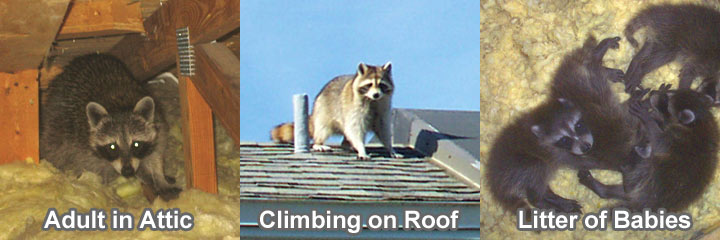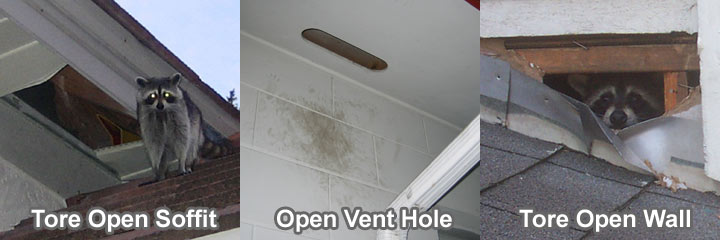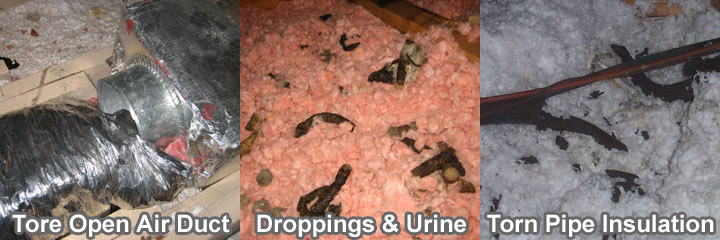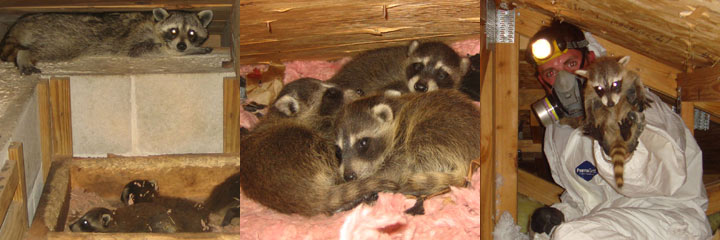24/7 Cell Phone: 562-372-4147




Long Beach California Raccoon Control Situation: Presence of raccoons in your attic
Raccoons are nocturnal animals which generally live in tree hollows, caves or underground holes. They have adapted very well to changes in living conditions. Today they nest comfortably in attics, chimneys and other secure places. While raccoons can look cute and harmless they can cause a lot of damage to your building. It is better to be alert and prevent them from nesting in your home.
The presence of a raccoon can easily be detected. The following five are some important tell tale signs to show the presence of raccoons.
1 Strange noise
Raccoons show their presence by their distinct sounds. They are:
1. Raccoons are big and heavy compared other pests. Rats and squirrels are small and light and scurry round quietly. Raccoons are loud and make thumping noise. They are noisier during mating season.
2. Raccoons are vocal. Adults make growling sounds and babies make sharp crying sounds. Babies become noisier in the presence of their mother.
3. Raccoons make nests with available materials. Gnawing sounds can be heard when they try to chew through materials in the attic.
4. Being larger than rats and squirrels they try to enlarge existing entry points. Sounds of bur roughing and tearing can be heard.
2 Inspection of attic
An inspection of your attic will confirm presence of raccoon infestation even if you do not see them. Raccoons are messy eaters and leave scraps of food and bones lying around. Presence of nesting materials like twigs, leaves, and chewed building materials can be seen. Raccoons use a separate area as their latrine. You can easily find one area covered with a lot of feces. Points of entry can also be seen.
3 Signs of damage
Raccoons have sharp teeth and claws. They cause damage to objects when searching for nesting materials. Damages to beams, roof tiles, dry wall, insulation, wiring etc are noticeable signs of raccoon presence.
4 Sighting
Raccoons being nocturnal are more active at night. Sighting a raccoon regularly near your home at night may indicate that it has a nest nearby. It is sighted when it comes out o hunt for food. Sighting of a female raccoon may point to the presence of babies especially when she has protruded nipples.
5 Time and season
Baby raccoon season stars in early spring and extends till March. Mothers look for secure places to nest and have babies. Attics are warm and secure. They are ideal locations for raccoons to nest. Babies start moving about after 3 months. Raccoons stay on till their babies are independent. It is important to be vigilant during these times.
If you are convinced of the presence of raccoons it is essential to call wild life experts to remove them. They are trained and know how to remove them in a humane way. They also seal entry points so that raccoons do not return.
DO NOT attempt to trap or poison raccoons. It is cruel and inhuman. Trying to tackle the situation yourself is dangerous and it is best to leave it to trained experts.
If you wish to learn more, click on the How to Get Rid of Raccoons in the Attic home page. For wildlife control, animal trapping services, and raccoon control in Los Angeles County, California, call us at 562-372-4147, and ask to talk about raccoons in the attic in Long Beach, CA.